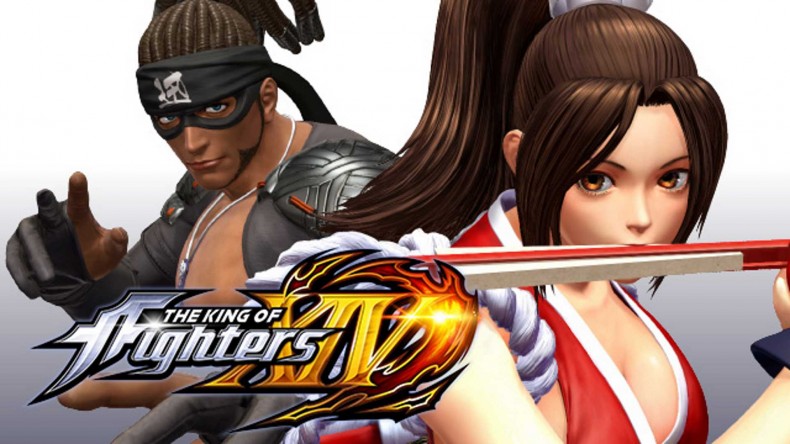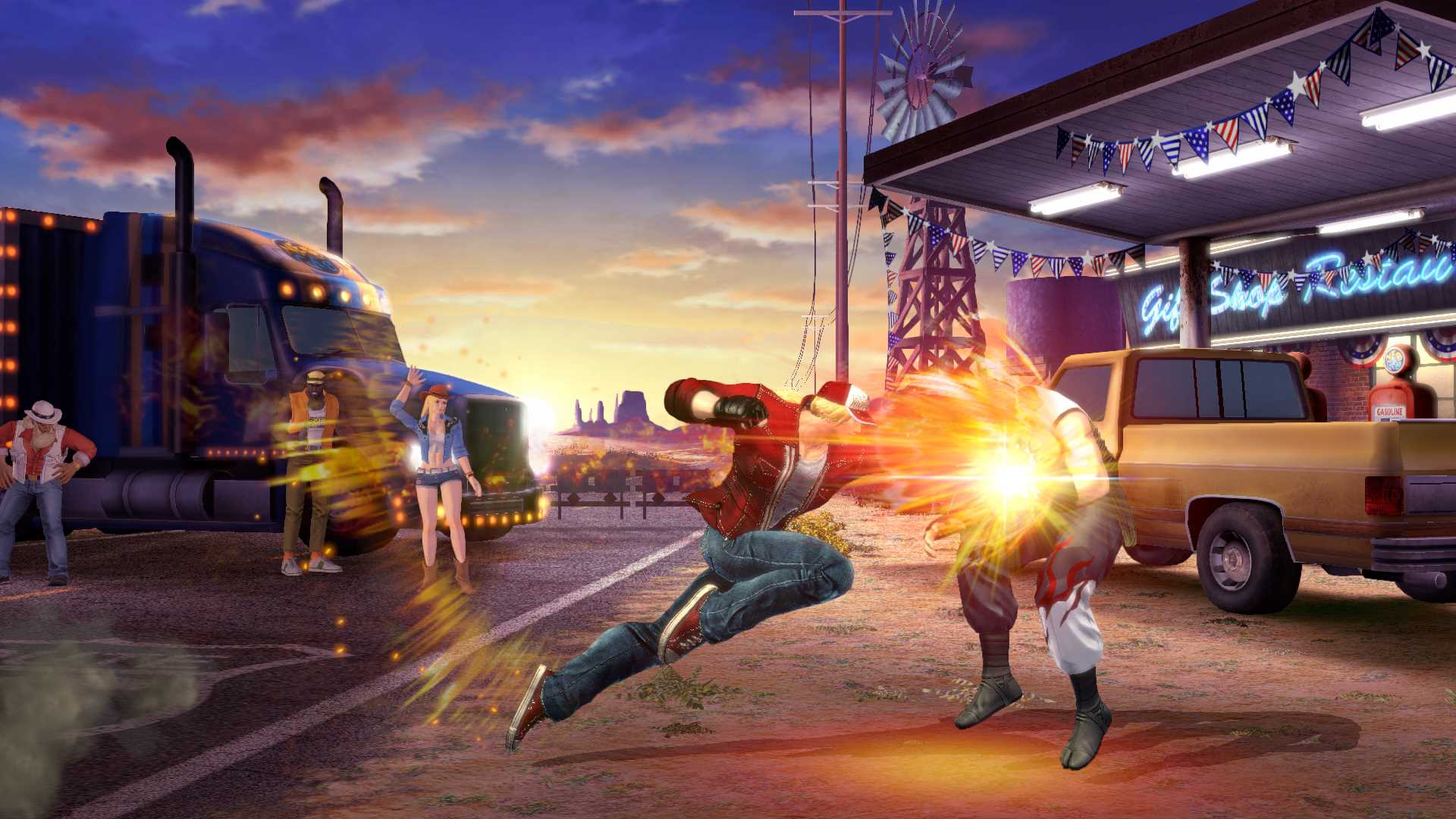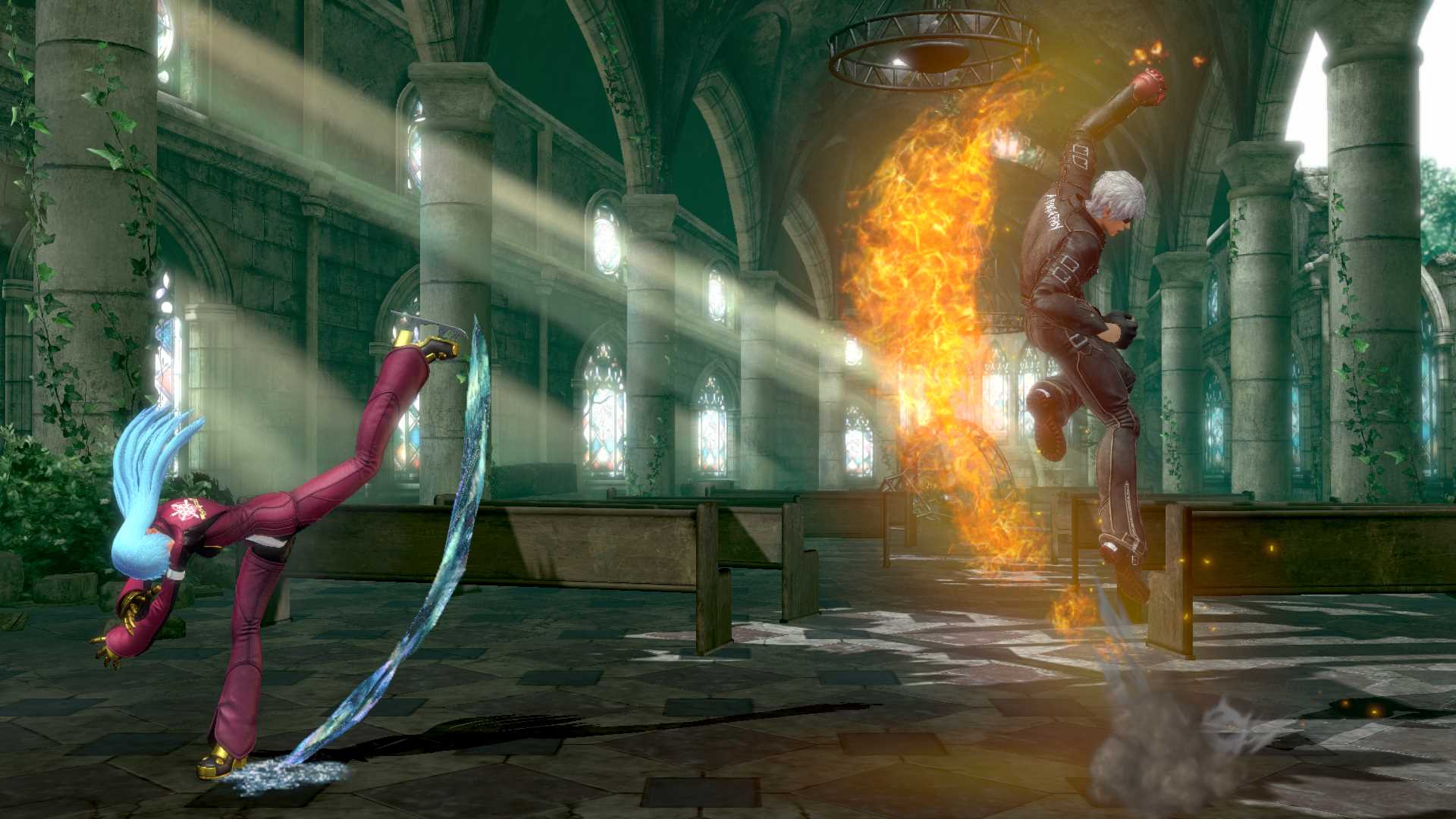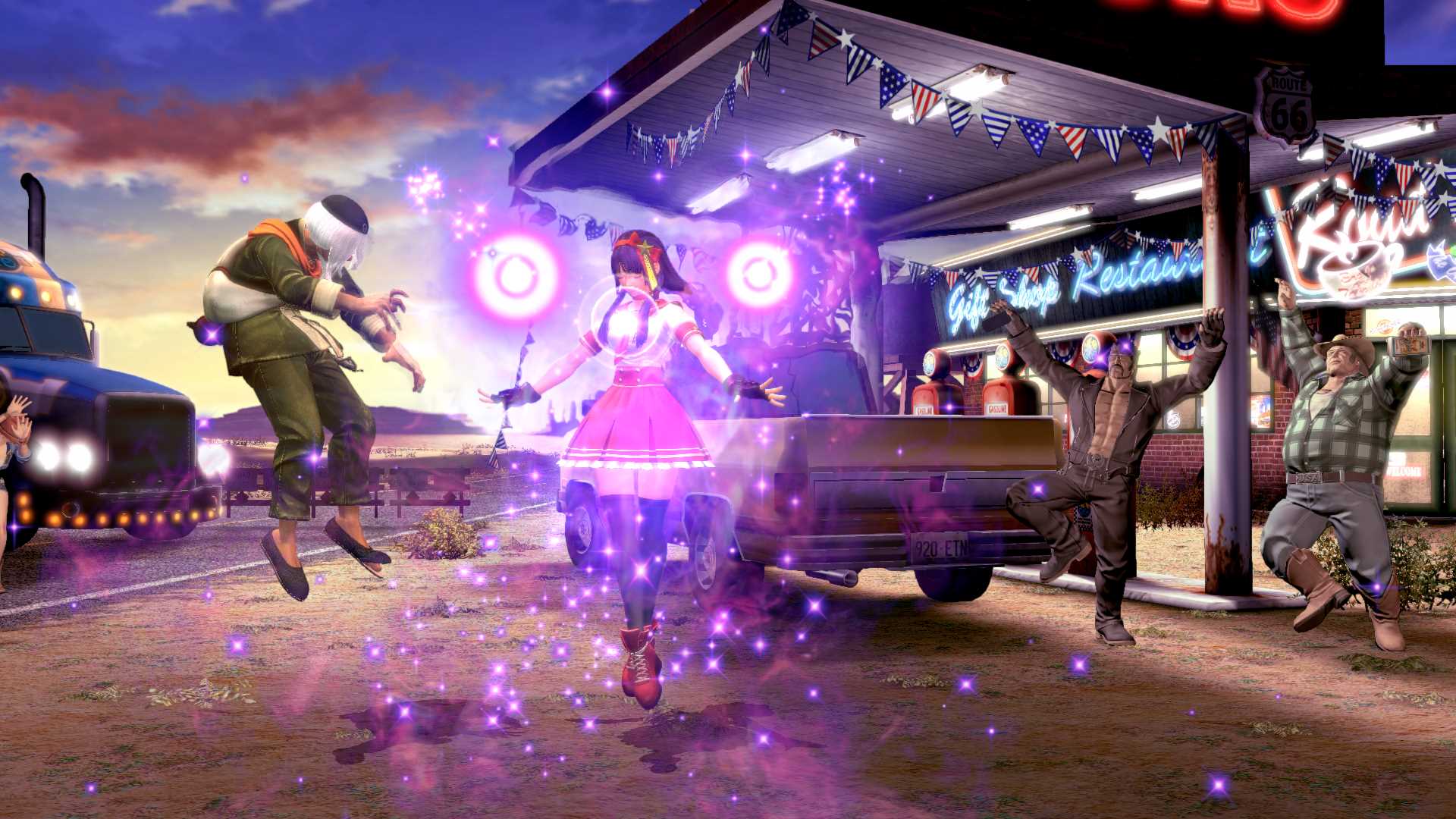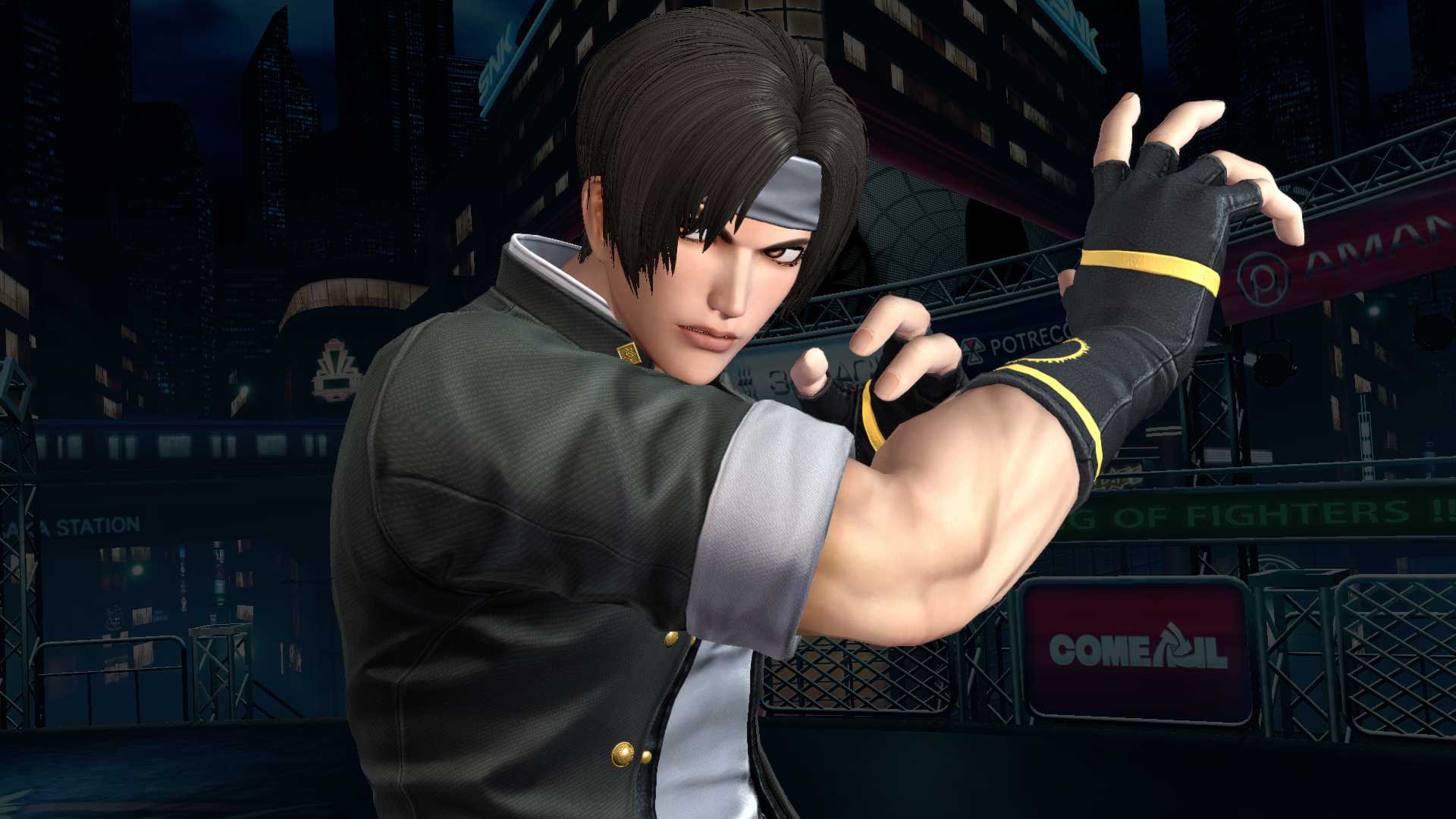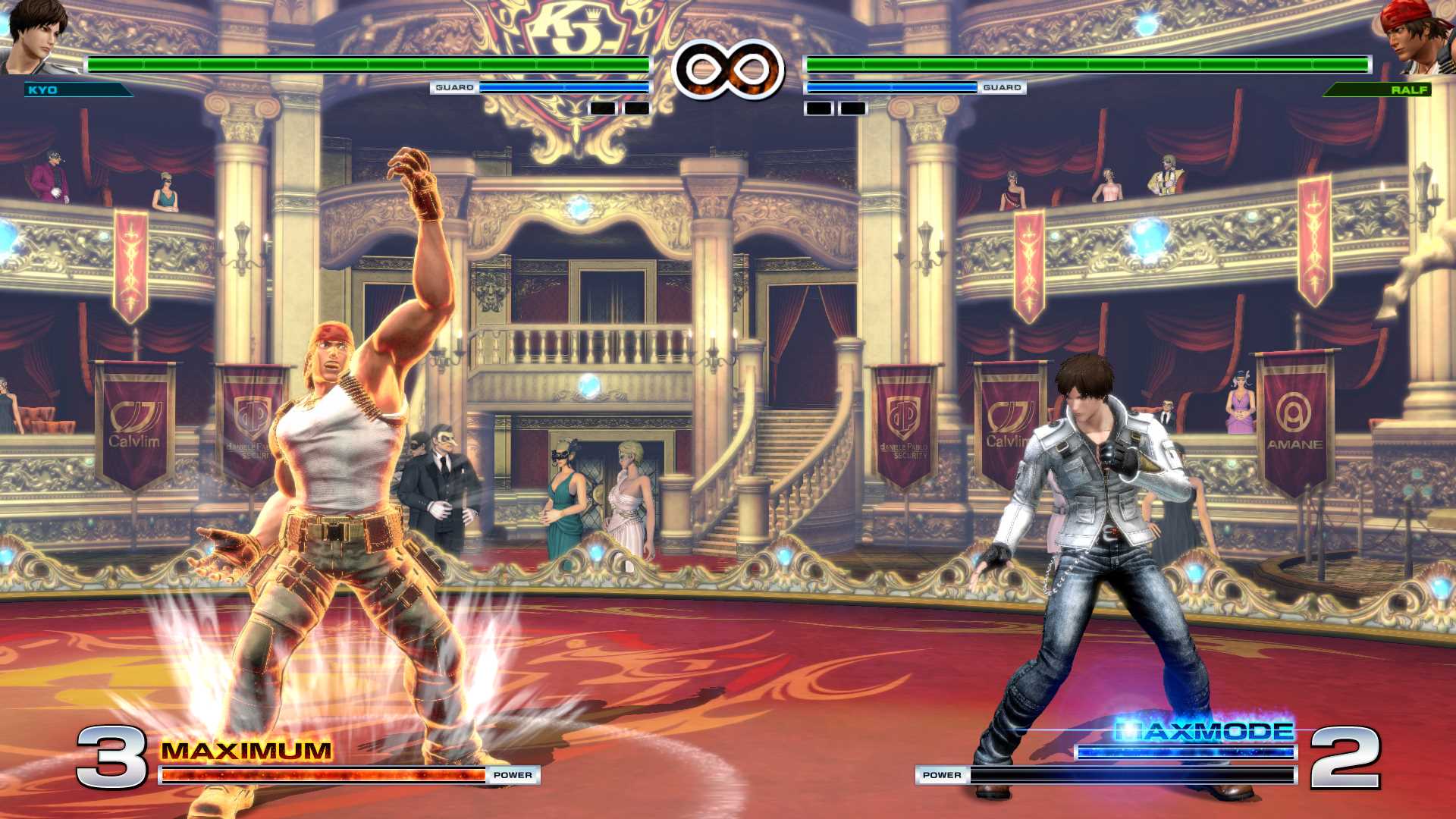August 23, 2016.
There’s something primal about fighting games in the sense that they bring out the hyper competitive side of players. Between the flurry of fists and a tirade of fireballs, there lies a thing of beauty: an intricate dance that only a few can see. To the less informed player, the spectacle is in the flashing lights, over the top characters, and the excitement that comes from taking that smug friend down a peg when they lose. But for more advanced players, there’s a mathematical approach: a risk vs. reward scenario that remains to be unseen. The King of Fighters XIV captures both of these elements perfectly.
Unlike some other notable fighting game releases this year, The King of Fighters XIV has a story mode. The narrative plays out over a series of fights as the organiser and previous winner of the KOF tournament, Antonov, introduces teams and gears up to take on those who reach the end. This brief story plays out like the arcade modes of old: a series of 10 fights in which the last two are a boss, and then another boss-type character. The true beauty of the story mode lies in the replayability, as each playthrough will unlock promotional art from previous games. Selecting the preordained teams instead of a hand-picked selection gives different endings with varying cinematics that go on to explain what this tournament means for those chosen. Doing well enough will also unlock the penultimate boss, Antonov, and the mysterious final boss; who will remain unnamed.
The offline offerings don’t stop at story mode, and the title boasts an array of varying modes like Survival, Trials, Training, Time Trial, Versus, and a Tutorial. Survival and Time Trails are just as you would expect: you’re limited to one character and aiming to either blast through the opposition as fast as possible or play it safe and survive for as long as you can. A key highlight for beginners is definitely the tutorial mode, which walks you through the basics but unfortunately covers less than a well-known tutorial online for KoF98 and might leave some knowledge gaps. Thankfully, there are other options available, like Training Mode and the Trials.
Training mode is, well, training mode. As a casual player, you may spend little to no time in here, but a more avid fan of fighting games will be happy to hear that the training mode is just as expected from a KoF game. It’s actually an improvement from XIII. First time players might find training mode obtuse, as there is never a clear approach what to practise or exactly what everything means – thankfully the trial mode gives a bit of guidance.
When compared to previous trial modes in the series, XIV’s trial mode starts at the most basic level with a special move or small combo being presented to the player. These trials are short and punctual, allowing novice players to pick it up and understand some basic combos, despite being rather poor and badly optimised. Because of this, more experienced players will not gain anything from the trials. With five available for every character, you will find yourself breezing through them once you get the hang of it, but my biggest concern is that they might stunt the growth of the player as it even points them in the wrong direction for some combos. Another issue is that it isn’t completely obvious when players need to stall inputs or even denote close normals, far normals, or even explain the icons themselves in the onscreen directions – you actually need to check a legend in-game to find out if you don’t understand them. After playing a few trials to get the feel for characters, I ended up skipping the trials entirely for some of the cast and jumping right into training mode, but there could be some appeal for those just looking to learn a very basic combo.
Regardless of how you feel about these modes, they all build towards a true understanding of The King of Fighters XIV. Coming to grips with it is one of the most fulfilling fighting game experiences I have had in years. There is so much depth, and it never feels stunted in terms of creativity the way previous titles or even Street Fighter V did. There is a great feeling of reactions and response that makes moves have weight; and your whiffed normal have consequences. The pace is wonderfully satisfying as you switch between running and hopping with ease and when you hit a button, it feels like the game responds accordingly. On top of that, XIV has introduced new mechanics like Rush Combos and Max Mode.
Rush Combos really open it up to absolute beginners. The easy entry available by pressing one button repeatedly isn’t anything new for fighting games, but it is a first for this series. Rush combos are achieved by pressing the light punch button in quick succession and, depending on the meter, will either combo into a special move or even a super. The Rush Combos do come with a trade-off, though, as executing a simple combo does dramatically less damage than a standard combo. On top of this, characters have slightly more limited movesets as without the use of Max Mode, it is no longer possible to use meter to enhance your special moves. There is also less reliance on extremely long extended combos and less meters to keep your eye on, which makes a dramatic impact as special moves can now cancel into super moves without the need of resources (drive in XIII) beyond the stock of meter required.
As well as allowing players access to “EX” versions of special moves, Max Mode allows for extended combos and more damage. Max Mode can be cancelled into from normal, but not specials, resulting in players having less meter to work with. When activated outside of combos, the time allocated to Max Mode is far greater, although both iterations lose sizable chunks of bar when an EX move is used. This allows you to play both defensively with projectile based characters, and offensively with more combo reliant characters, while adding a bit more depth to the systems like previous games. Unlike the HD drive of KoF XIII, it is (thankfully) not possible to cancel specials into specials. This isn’t the only recurring feature to be tweaked for KoF XIV: there is also ‘Just Defend’, a mechanic players of Garou: Mark of the Wolves will be familiar with. When an attack is blocked with precise timing, the user will be rewarded with additional meter but, unlike Garou, this does not reduce the amount of recovery on blocking an attack.
When you combine all this with a cast of 50 characters and countless teams you can create from the expansive range, you will be spoiled for choice. There are so many characters to fall in love with, each having their own distinct moves and identity. I wasn’t able to settle on a team as there were just too many characters. From returning favourites to brand new characters, you are bound to find your own misfit team of 3 to take on the world. It’s just unfortunate that in spite of the massively entertaining cast, there seems to be an inconsistency in the quality of their animations, portraits, and models that some might be unable to overlook. It’s truly a shame, but seeing as this is the first 3D modeled King of Fighters game since Maximum Impact, it can be glossed over considering how good it feels.
The topic of 3D models and their implementation has come up before when discussing this game. As far back as the first trailer, people have been worried about the visual style of the series’ latest entry. Up to KoF XIII, with the exception of the Maximum Impact games, the series was renowned for its sprite work and represented one of the few fighting games to still value the style. Although there have been significant improvements since the initial trailer, XIV still suffers from poor animations and some lackluster stages. But that’s not to say that all of them look awful, in fact it’s quite the opposite. Many of the backgrounds, such as Derelict Church, Iguaza Falls, and Neo Osaka are fantastic, but let down by other stages and a few characters that feel like they have not been developed quite as much as others. Even the smallest of flaws show up massively when the character is placed on the luminous white background of the victory screen, or the varying quality of character portraits of the member select screen. It feels like this approach to character models has hindered the amount of creativity afforded to alternative colours and (my personal favourite) custom colours from being included in the game as all characters only have 4 different options.
Just like the visuals, there is also growing concern over the implementation of the soundtrack as many prefer it to be tied with chosen character themes as opposed to stage-based music. Unfortunately SNK has gone with stage-based themes, but all hope is not lost. Instead of just having character themes or stage themes, SNK has adopted older themes from previous games that act as subtle nods to previous teams or different sections remastered/remixed for XIV. This means that when characters like Iori and Kyo face off, there is a character specific theme as opposed to the stage theme. It’s the kind of fan service that will go over many new players heads but will remembered by devout fans, and it’s great. Then again, it also runs as smooth as butter without a single dip in framerate as it glides along at 60fps.
SNK has gone all out when it comes to providing the best experience they can and, to an extent, it has added online capabilities. Local connections are better but when venturing further afield, but there are definitely some issues between players regardless of the quality of their internet. Online is virtually imperative in the modern age and depending on how well the servers hold up on the opening weeks, a lot of players might be turned off. There are also some odd decisions for online play that impose a list of players on screen while you are in a fight, which can be off-putting. Thankfully they can be turned off, but having this display as the default option seems odd.
The online lobby system (although unexplained) is extremely interesting, allowing players to create a room of 12 players and jump between a variety of different in-lobby match types designated by the host. If you’re the impatient type (much like myself) you need not wait in line and you can message other players waiting in the system to move to a different queue. It’s a unique way of reducing the often long waits in large queues but it also works against itself. Even in the few rooms I played in, many players seemed segregated and split off from one another to play between themselves in the 12 player lobbies.
Previously I had not given The King of Fighters its dues, often looking at the execution required as an unapproachable behemoth. It was daunting. Later on, however, I started taking notice of XIV and even learned some basics through XIII that helped me appreciate and understand the series. With XIV in my hands, it feels like a truly realised approach that retains enough depth that expert players will still love and appreciate it while the ease of the trials and combos will welcome new players, too. I find it hard to overlook some of the jarring visual aspects, and the electric backgrounds of XIII seem to be a thing of the past which stops XIV from being perfect. But much like fighting games, the pursuit of perfection is far better than the realisation. KoF XIV is all about the feeling, and it has never felt better.
Deeply satisfying combat
Entertaining character designs
Lots of fan service
Tutorial could be better
Some characters aren’t visually up to scratch
Online lobbies needs explanation
A fighting game that packs a punch and is worthy of the series’ name. Once you see past some questionable animations you’ll find countless hours of fun mixing and matching teams on and offline.


